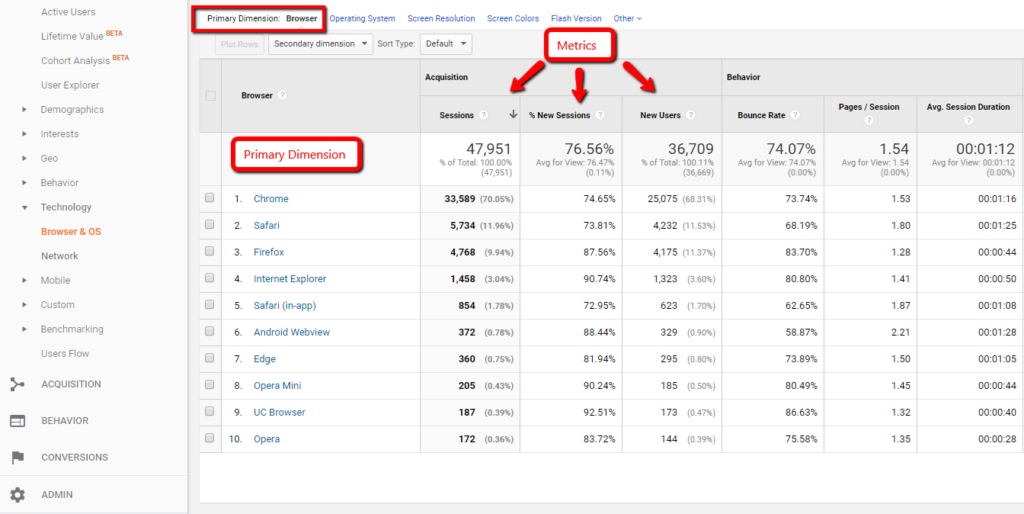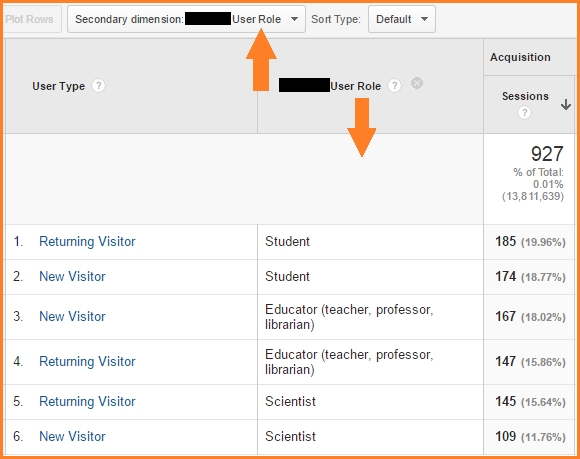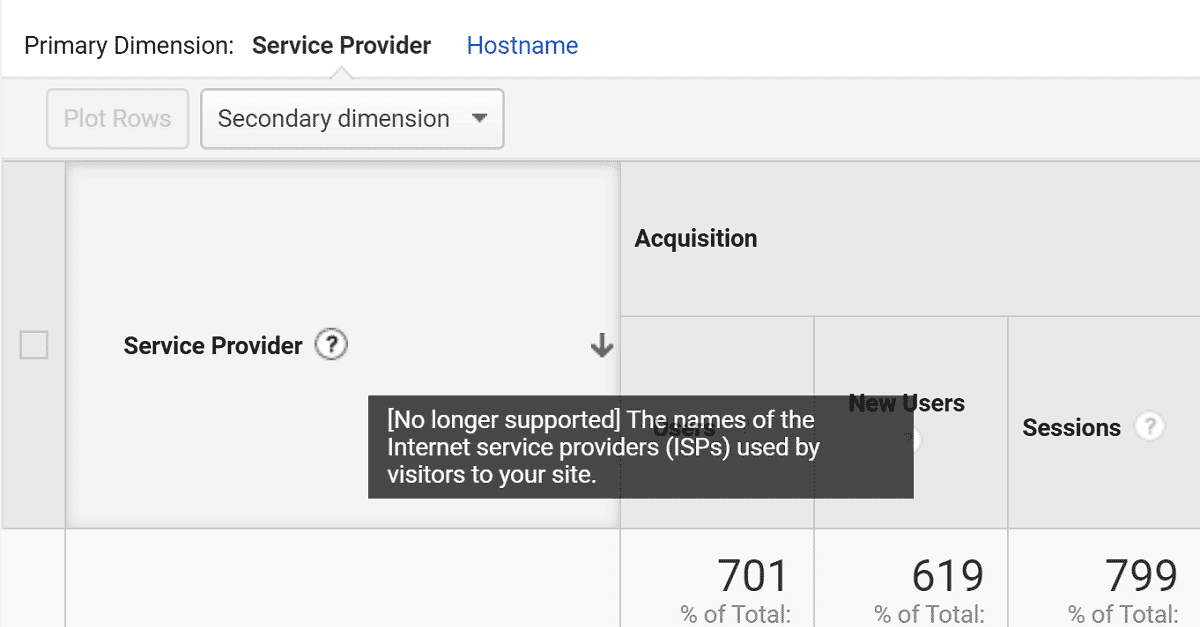Unveiling the 'Secondary Dimension' in Google Analytics: What You Need to Know
Unveiling the 'Secondary Dimension' in Google Analytics: What You Need to Know
Blog Article
Translating the Value of Secondary Dimension in Google Analytics: All Concerning Its Relevance and Influence
In the realm of digital analytics, the use of secondary measurements within Google Analytics acts as a crucial device for critical deeper layers of information understandings. The significance of secondary measurements exists in their capability to give a nuanced view of customer actions and interaction with a site or platform. By studying data beyond surface-level metrics, businesses can unlock a wealth of information that fine-tunes and forms tactical decisions advertising efforts. This exploration right into the realm of additional measurements not only supplies a thorough understanding of user interaction yet additionally sheds light on the intricate dynamics that drive on the internet performance.
Comprehending Second Measurements in Google Analytics
The understanding of second measurements in Google Analytics is necessary for acquiring much deeper insights right into individual actions and internet site efficiency. While primary measurements give basic information factors such as web traffic resources and page sights, secondary dimensions enable an extra nuanced evaluation by giving extra context to these key metrics. By incorporating additional dimensions, users can section and filter their information to uncover patterns and patterns that may not be instantly evident.

Revealing the Benefits of Second Measurements
Structure upon the foundational understanding of second dimensions in Google Analytics, checking out the advantages they use discloses very useful understandings for enhancing information evaluation and decision-making. By including second dimensions, customers can delve much deeper right into their information, obtaining an extra thorough sight of individual habits, material performance, and other vital metrics.
Moreover, additional dimensions offer context to primary data, supplying added layers of details that can help in comprehending individual interactions and choices. This improved understanding can guide strategic decision-making, leading to more targeted marketing projects, site optimizations, and total enhanced performance. Essentially, additional dimensions work as a powerful device for unlocking much deeper insights and taking full advantage of the energy of Google Analytics for businesses and web site owners.
Leveraging Second Dimensions for Improved Insights
By harnessing the power of secondary dimensions in Google Analytics, businesses can reveal much deeper understandings that drive educated calculated and decision-making optimization initiatives. Leveraging second measurements allows services to dig beyond surface-level data and obtain an extra detailed understanding of customer behavior, target market demographics, website traffic sources, and internet site efficiency. As an example, by integrating main measurements like traffic sources with secondary measurements such as geographical place or gadget classification, companies can identify which tools or regions are driving one of the most beneficial website traffic to their web site.
In addition, additional measurements make it possible for businesses to section and examine data a lot more successfully, aiding them identify trends, patterns, and chances that might have otherwise gone unnoticed. By making use of second measurements, Bonuses companies can customize their marketing approaches, web content, and user experience to much better satisfy the demands and preferences of their target audience. Basically, leveraging secondary dimensions in Google Analytics equips services to make data-driven choices that bring about boosted efficiency, boosted ROI, and lasting development.

Influence of Secondary Dimensions on Data Analysis
Enhancing information evaluation with the utilization of additional measurements in Google Analytics gives services with a much deeper understanding of their on-line performance metrics. By incorporating secondary dimensions, such as time of day, geographical area, or device group, services can uncover beneficial understandings that may have been neglected with primary measurements alone. This improved level of granularity permits even more accurate segmentation of data, allowing companies to recognize patterns, fads, and advice correlations that can drive tactical decision-making.

Maximizing Potential: Secondary Capacities Approaches
The strategic application of second measurements in Google Analytics expands beyond boosting information evaluation; it includes crafting targeted approaches to unlock the full potential of useful understandings for organization growth. By employing additional measurements efficiently, companies can dive much deeper right into their website traffic, individual actions, and advertising and marketing projects to remove actionable understandings. One vital technique is to integrate second measurements with primary dimensions to gain an extensive view of individual communications. Combining the primary dimension of 'source/medium' with secondary measurements like 'touchdown web page' or 'tool classification' can expose which networks are driving website traffic to particular pages or how individual habits differs throughout devices.
Moreover, making use of secondary measurements to section information based on user demographics, behavior, or modern technology can assist businesses tailor their advertising initiatives to certain audience important site segments. This targeted approach can cause improved conversion prices, improved individual experiences, and ultimately, raised ROI. By making the most of the potential of additional measurements in Google Analytics, services can make educated decisions, optimize their online visibility, and drive sustainable growth.
Verdict
In conclusion, secondary dimensions in Google Analytics play an important role in offering much deeper understandings and boosting data analysis. Including second dimensions right into data analysis techniques can lead to even more informed decision-making and improved general performance.
While main measurements offer essential data factors such as website traffic sources and web page sights, additional measurements allow for a more nuanced analysis by providing extra context to these primary metrics. By combining key dimensions like traffic resources with additional measurements such as geographical place or device category, services can determine which devices or areas are driving the most valuable traffic to their website.
By incorporating secondary measurements, such as time of day, geographic location, or gadget group, services can discover beneficial insights that might have been neglected with main dimensions alone. One essential technique is to incorporate secondary measurements with primary measurements to gain an extensive view of individual interactions. Matching the primary measurement of 'source/medium' with second dimensions like 'landing page' or 'tool category' can reveal which channels are driving web traffic to details pages or exactly how customer habits differs throughout devices.
Report this page